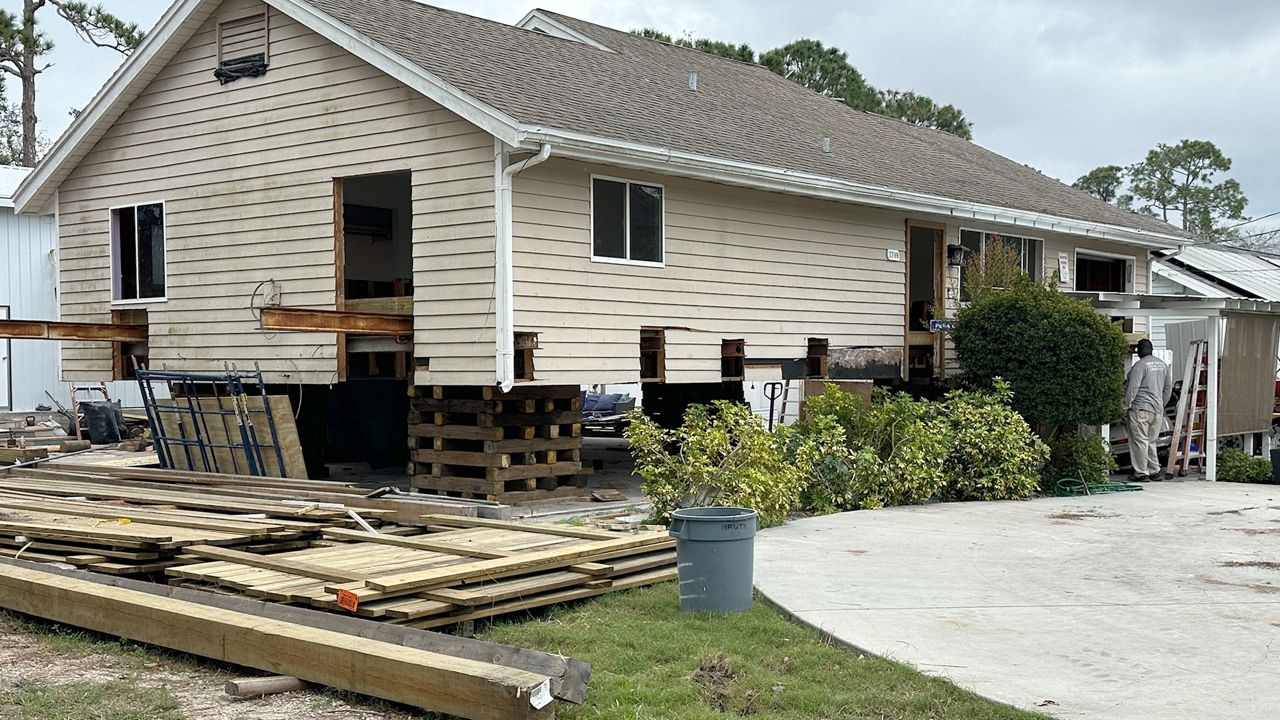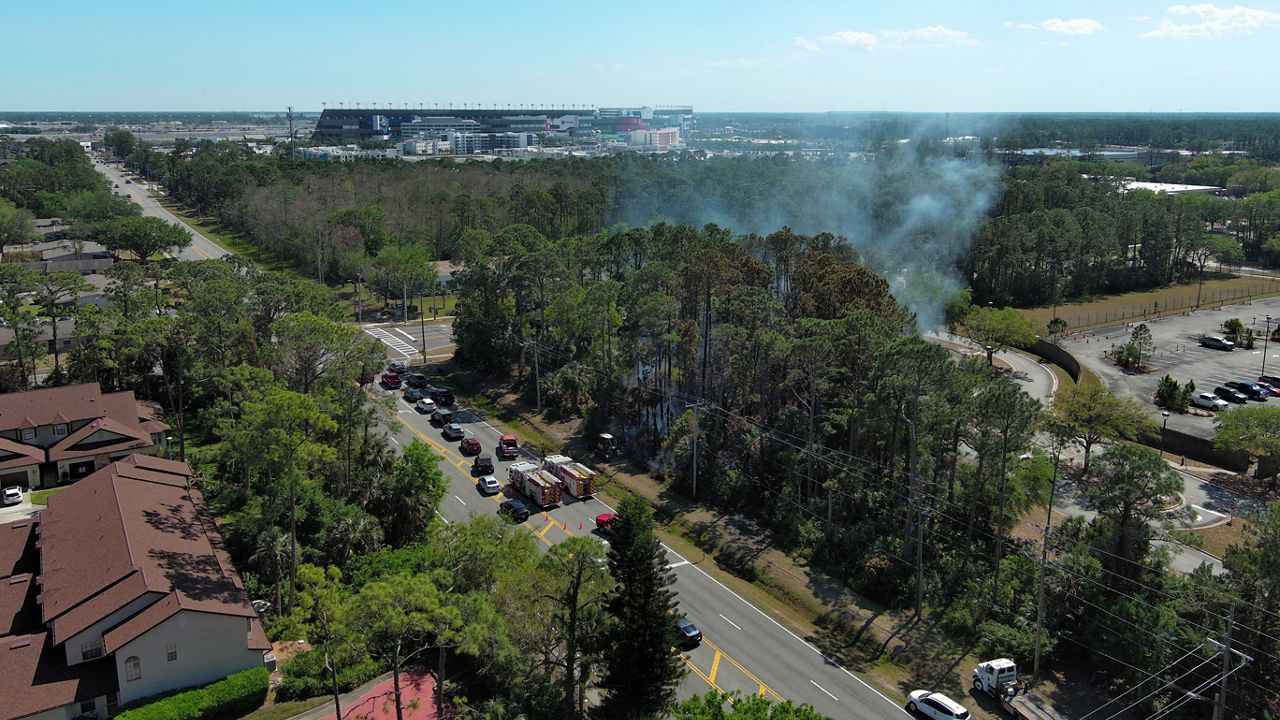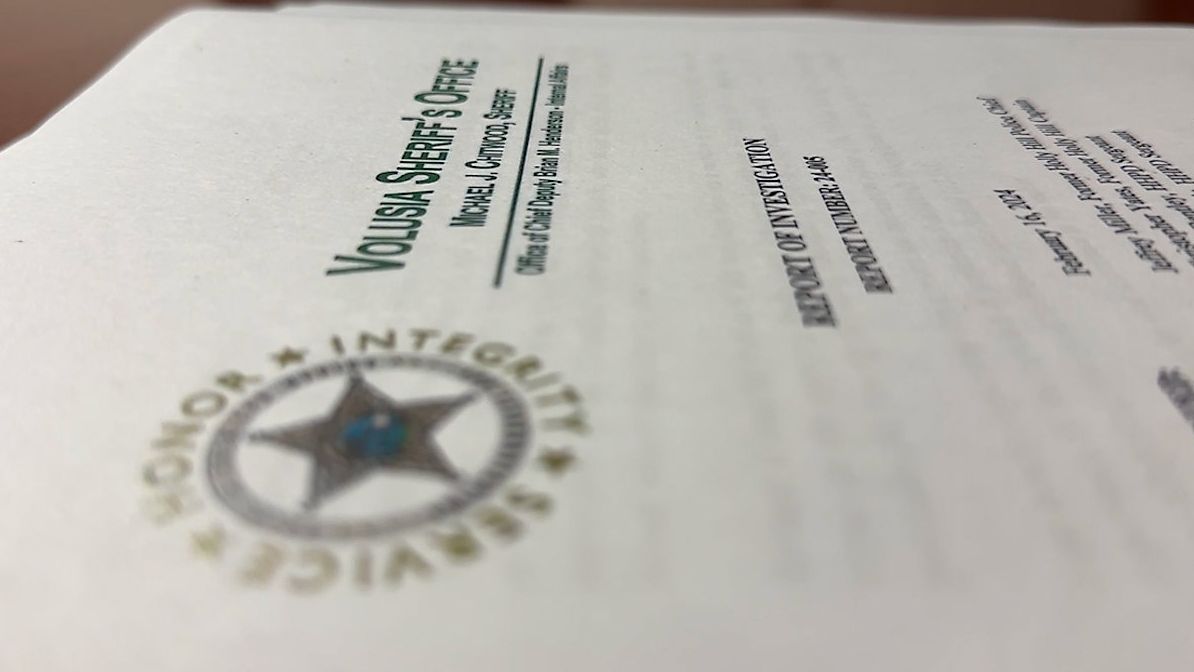ORMOND BEACH, Fla. — Public online documents revealed that the Florida Department of Environmental Protection (FDEP) has renewed its plans to pave a 1.5-mile dirt road inside Tomoka State Park in Ormond Beach.
A group of protesters, including Ormond Beach residents, came together to express their opposition with this plan and asked for city commissioners to stand behind them.
Many of the protesters felt upset about not being included on the matter, and learning about the plans through word of mouth or online research.
Residents shared similar concerns about what paving the dirt road will mean for the state park’s environment and historical nature.
Jody Miles is a volunteer at Tomoka State Park and she spends most of her down time in the park’s garden.
“It’s like my Zen place when I go there. I’m like five minutes away, so I’m there a lot and just the thought of the old Florida. You might as well stay on Beach Street. Why bother going in on a paved road next to Beach Street? It loses that whole old Florida feel,” Miles said.
But when she learned that the state park’s 1.5-mile dirt road was undergoing plans by FDEP to be paved, Miles and many other Ormond Beach residents were upset.
The project to pave the dirt road was initially proposed in 2012 as part of the park’s Unit Management Plan to recommend that roads in the park be stabilized.
According to information sent to Ormond Beach resident, Suzanne Scheiber, from FDEP’s Park Manager Terri Newmans, “this plan forms the basis for all aspects of planning, development, and management of a given park. These plans are created with input from advisory groups and with information from the general public through a series of public meetings.”
The last time Tomoka State Park went through this process was in 2012, when FDEP added paving roads to the Unit Management Plan’s agenda.
Newmans said that “they (FDEP) held a public workshop and an advisory group meeting to present the draft plan to the public on March 27 and 28 in 2012.”
More recently, the FDEP submitted a work plan for the project in January 2023 and completed design plans this February.
Now, residents are concerned about the environmental effects that this will have on the site which is on the national registry of historic places.
“Times have changed and with all of the flooding going on in our county and the items that we face here with development, the majority of people are not for paving a road in a state park now,” said Scheiber, the founder of the Dream Green Volusia organization.
FDEP estimates paving the road to cost more than $1.5 million, which Scheiber says they should use to address the unmet needs of the park.
Joe Hannoush has been living in Ormond Beach for more than 20 years. Like many others, he fears that this could pave the way for future development down the line.
“This is just like one brick in the road if you will, towards future development for sure. They’ll 100% want to repave it later, add more lanes, add crosswalks, that, et cetera et cetera,” says Hannoush.
He wasn’t alone in sharing those concerns at a time when residents and environmental groups pushed back against the FDEP’s Great Outdoors Initiative, which was planning to add different types of amenities, including golf courses and pickle ball courts to at least nine state parks.
“With the other parks in our state which recently we found out were going to be developed with golf courses and other pickleball courts and lodges, it raised an eyebrow to find out they were looking at paving this road and everyone else was looking the other way at all the other parks, and this was happening right here in our own backyard,” Scheiber said.
After their protest, residents attended the Ormond Beach City commission meeting to garner support for a different resurfacing of the dirt road that is more environmentally friendly.
Scheiber said residents hope city commissioners will write a letter of opposition to FDEP, aiming to cut the project in its tracks.
Although Spectrum News 13 reached out to FDEP for comment on concerns from citizens and additional information on the project, we did not receive a response.
However, Scheiber provided information she had received from FDEP’s Park Manager Terri Newmans about the project’s intentions.
“Although our Unit Management Plan allows for paving all the roads in Tomoka, we are trying to keep the paving minimal and only paving the areas that are the most heavily used and tend to degrade the fastest. We are repaving 1100’ at the entrance of the park and 1.5 miles of the dirt road from north of the campground area to the Tomokie Statue parking area. All the other roads in Tomoka will remain unpaved,” Newmans said.
“The stabilization of the roads at Tomoka has been a subject of conversation since at least 2008. During dry periods, the roads become dusty and soft. In some spots, it is like driving on the beach in fine sand, creating a hazard for larger vehicles and camping units accessing the park. During wet periods, the roads hold water for multiple days, swales form, and certain sections turn to mud, causing safety and access issues. Former management made numerous attempts to resolve the issues prior to paving, including bringing in a professional grader to attempt to level out the road and capping the road with crushed concrete. However, all attempts have failed, and several have ended up causing more issues. We currently attempt to keep the road accessible and safe by grading the road with a tractor and using fill dirt and rock to fill swales and areas prone to become mud or overly soft. However, all of our attempts are temporary, and the materials erode with each rain,” Newmans continued.
Scheiber made it clear that this was in no way a face-off between the public and the state park, its rangers or volunteers, but rather an instance of the public wanting to do what’s right to preserve its green spaces.











